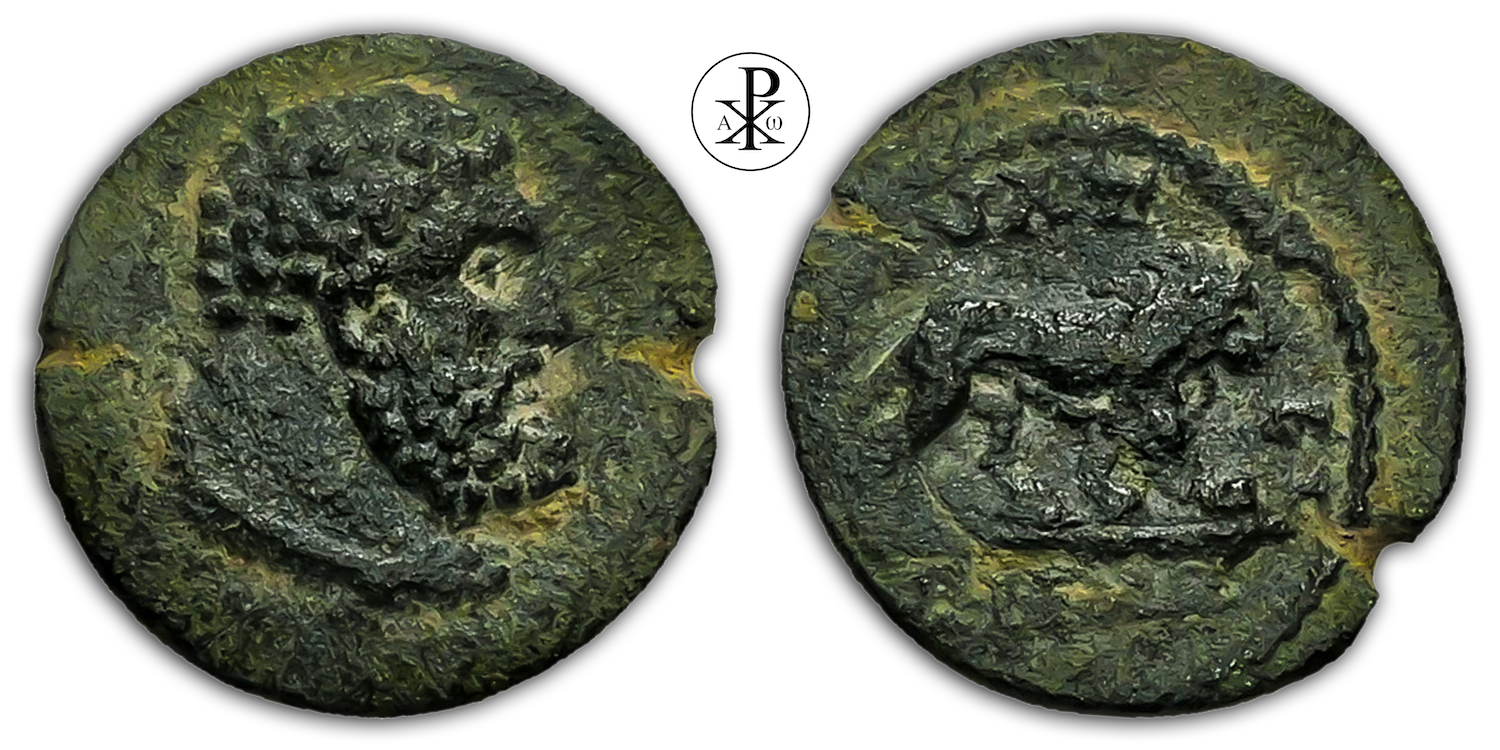Imperator Caesar Marcus Aurelius Commodus Antoninus Augustus
Reign: Pseudo-autonomous; time of Commodus
Mint: Thyatira, Lydia
Date: 184/192 AD
Nominal: Bronze
Material: AE
Diameter: 14.73mm
Weight: 2.08g
Reference: RPC IV.2 17366
Reference: Hochard 2672
Reference: SNG München 578
Reference: SNG Turkey İzmir 667
RPC Online: https://rpc.ashmus.ox.ac.uk/coins/4/17366
Rare: Specimens 3 (2 in the core collections)
Provenance: Concordia Numismatik Tumeltsham, Austria (Auction 4, Lot 1322)
Pedigree: –
Obverse: Bust of Heracles (head assimilated to portrait of bearded Commodus?) wearing lion skin around neck, right
Inscription: –
Translation: –
Reverse: Lion advancing, right
Inscription: ΘVΑΤƐΙΡΗΝΩΝ
Translation: Tuateirenon
Translation: City of Thyatira
Comment: Thyateira (sometimes also called Thyatira), today’s Akhisar in Turkey, was an important trading and industrial city in the Asia Minor region of Lydia in ancient times. It was located in the Lyco Valley, on the road from Pergamon to Sardis. Thyateira was founded under Seleucus I Nicator in 281 BC as a Macedonian military colony; however, the Lydian name could suggest an earlier settlement. After an initially chequered history as an outpost of various powers, the city belonged to the Kingdom of Pergamon from 188 BC and came under Roman rule with it – albeit only after the uprising of Aristonikos – in 129 BC as part of the new province of Asia. The economic prosperity of Thyateira in the imperial period (especially from the 2nd century onwards) was based primarily on textile production and metalworking. Craftsmen and businessmen were, as in other cities, organised in associations (guilds) under the patronage of a deity (Rostovtzeff, 619-620 note 43). Although not a major city, Thyateira was a stop on the journey that Emperor Hadrian made through Syria and Asia Minor in 123-125 AD. Altars and priests are attested for the imperial cult in Thyateira (cf. the maps in Price, xxii-xxv), but the city does not seem to have been a centre of the provincial imperial cult. The city gods of Thyateira were Asclepius, Dionysus, Artemis and the sun god Apollo Tyrimanaios, who enjoyed special veneration – especially when the emperor was worshipped as Apollo incarnate, the son of Zeus. Since 297 AD Thyateira belonged to the province of Lydia, in Byzantine times to the subject of Thrakesion. In the battle of Thyatira, Emperor Valens defeated the usurper Procopius in the spring of 366 AD. Since ancient Thyateira is covered by a modern settlement, the excavation area is limited to a small park in the city centre at the site of the agora, where remains of arcades and a basilica from Late Antiquity can be seen.
